Meeting with a group of kindergarten teachers about writing throughout the year, there is often a common feeling on “HELP! We are never going to be independent writers.” If this is you, take heart.
Guiding writers is hard. Deciding how much support students need is hard. Trying to meet with and support all of your writers is hard. I see you. Independent writers aren’t created in one day, one mini-lesson, or one mentor text. They aren’t created in a week or a month.
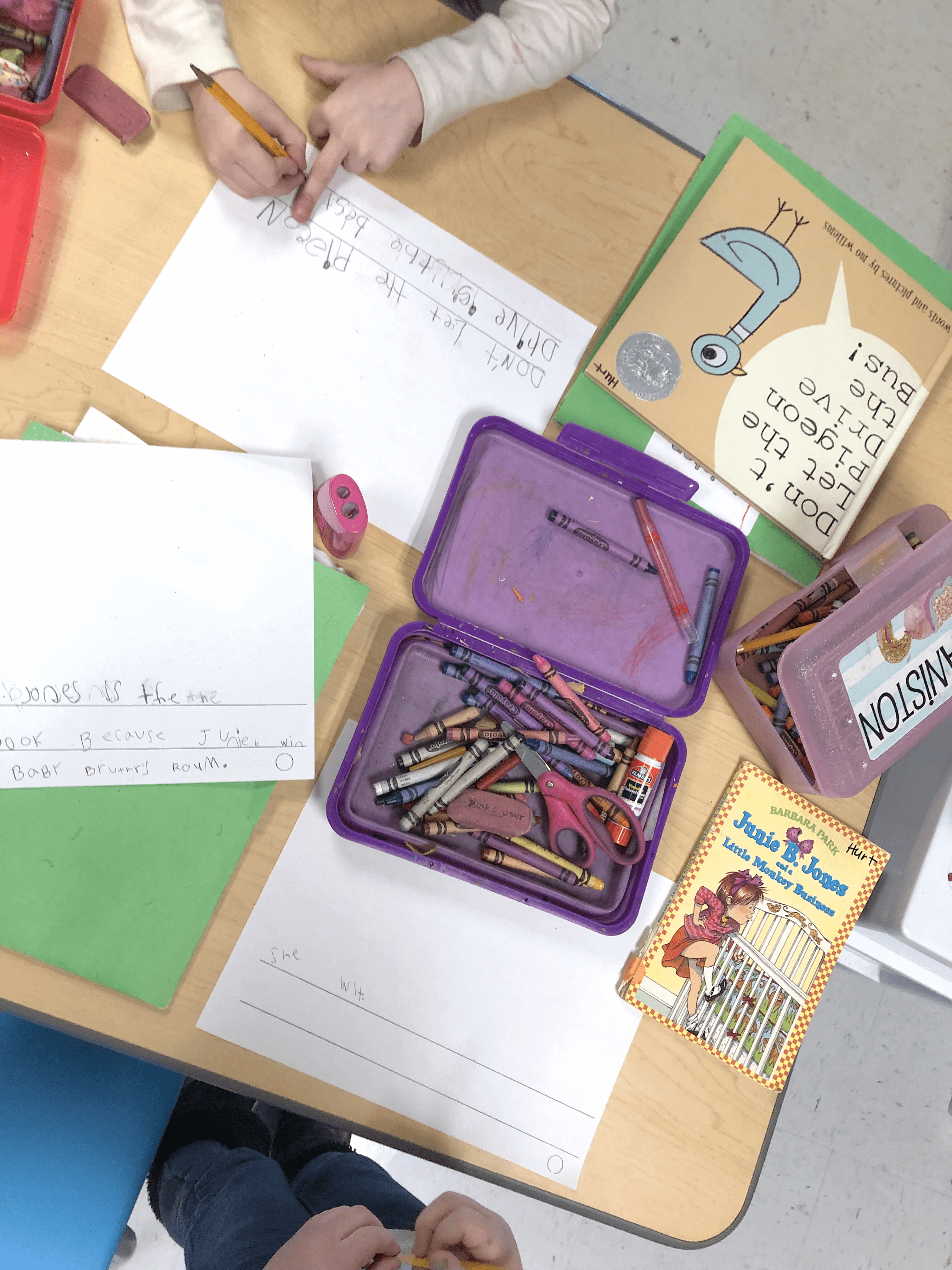
Teaching writing is truly the art of teaching. It’s responsive, on-the-spot, and individualized. Also, teaching writing is all about the l-o-n-g game. It takes time, intentionality, daily opportunities to write, and appropriate scaffolds. Gradually we build independence in our students and our role, as a teacher, evolves.
Scaffolding Kindergarten Writers
There is no hard and fast rule about offering support. In general, the goal is always to reduce scaffolding over time. Over scaffolding can led to dependence and helplessness. A scaffold isn’t meant to stay forever.
There are many different ways to scaffold students. (Read this post about scaffolding 1st grade writers.) Some students will need ALL of them. Others will be ready to independently write. While other students will start with dictating and not need tracing or rewriting. As teachers, we are responsible for making in-the-moment decisions about the just-right ways to push students based on instruction provided, student confidence, and writing samples.
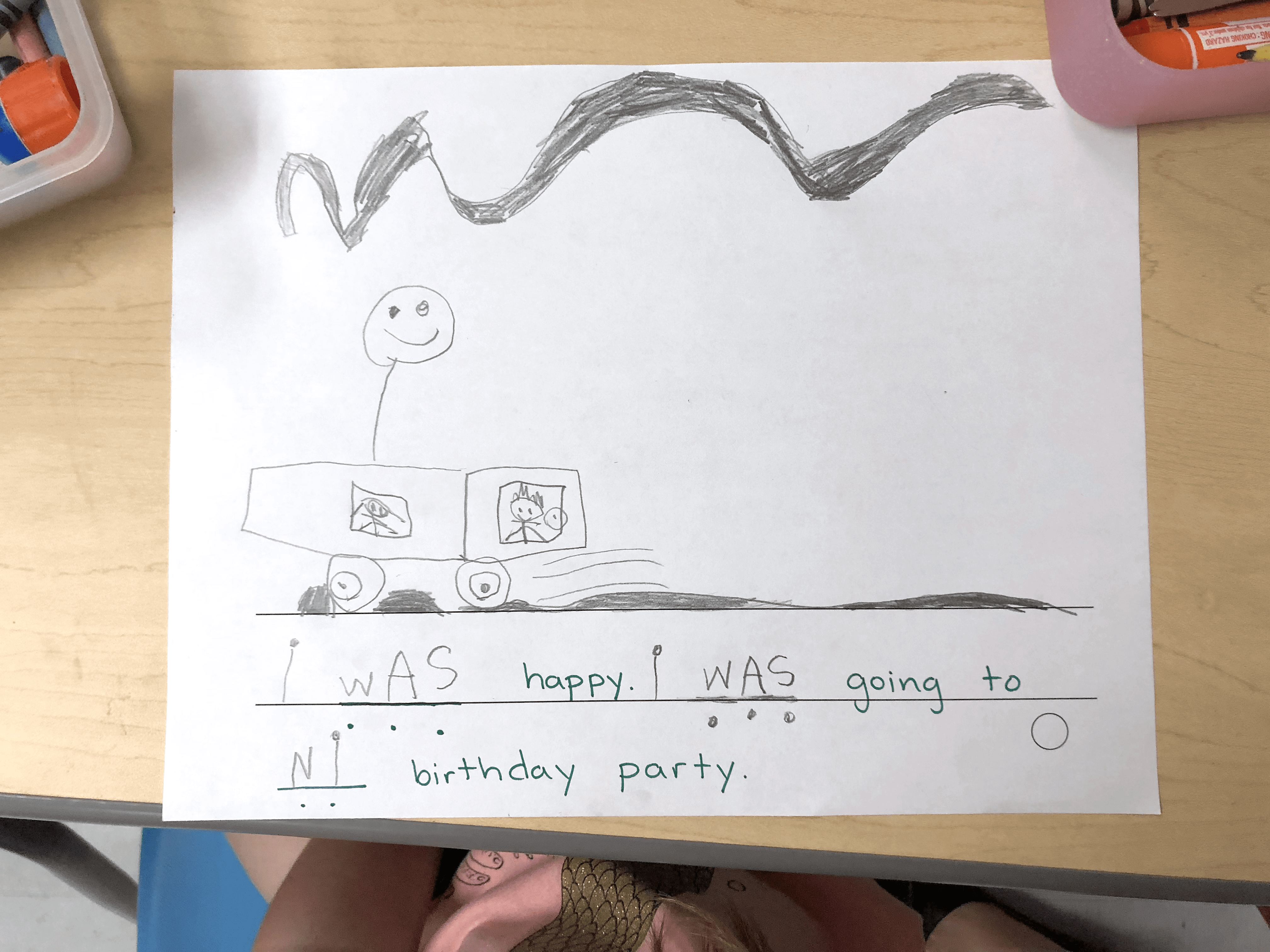
What Scaffolding Might Look Like
Below are some of my go-to ways for scaffolding kindergarten writers. You may have preferred scaffolds. Your students may need some of these and they may need none of them.
Oral Language
Drawing
Dictating
Tracing or Dictating + Rewriting
Dictating + Lines (words) + Dots (sounds)
Sentence Stems/Frames
Graphic Organizers
Oral Language
Before we ever touch a pencil, we must give opportunities for students to think, to learn, to play, to create. We want students talking, using vocabulary, answering in complete sentences, and being exposed to words. This means we spend a lot of time asking and answering questions, telling stories, and modeling/practicing complete sentences.
This also means phonological awareness skills matter! We use the Heggerty program 2x a day in kindergarten. This quick (8-10 minutes), scripted program offers student exposure to and practice with ALL the skills we will use in later writing scaffolds (counting words in a sentence, hearing and identifying the number of sounds in a word, isolating initial and final sounds, etc). Students who are unable to hear, produce, and manipulate sounds will often struggle with writing. Foundational literacy skills matter!
Drawing/Illustrating
Drawing is a skill we specifically teach in kindergarten. From finding small shapes in bigger shapes, adding details, making pictures life-like, having pictures match words – illustrations matter. Initially many kinder writers will not be writing at all. Rather, they will share their ideas with drawings. As students draw, we will encourage and support them in verbalizing their ideas. Oral language MATTERS!
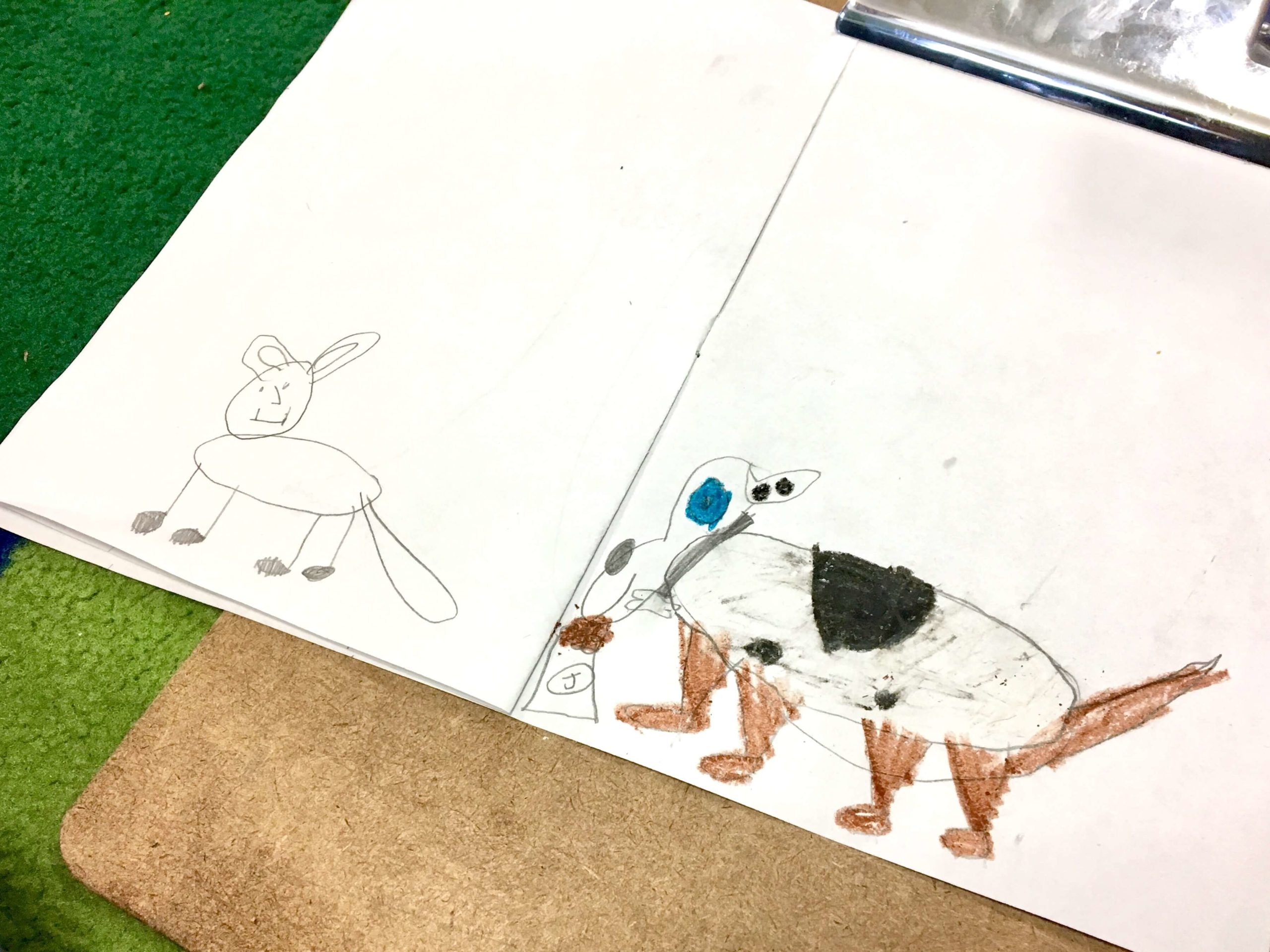
Even when students are able to write sounds and words, having students start with the picture can allow you, the teacher, time to use the below supports with students who are ready.
Dictating
Scaffolding kindergarten writers will include a lot of conversation (before, during, and after writing.) Dictating is the highest level of teacher-directed support. For Kinder, the Common Core Standards read “Use a combination of drawing, dictating, and writing to compose…” (The new Kentucky Academic Standards keep these supports.). Which means, a student can still reach mastery of this writing standard using all of these things. Slowly, we start building independence – drawing lines to indicate individual words, identifying individual sounds in words (initial sounds —> final sounds —> middle sounds) etc.
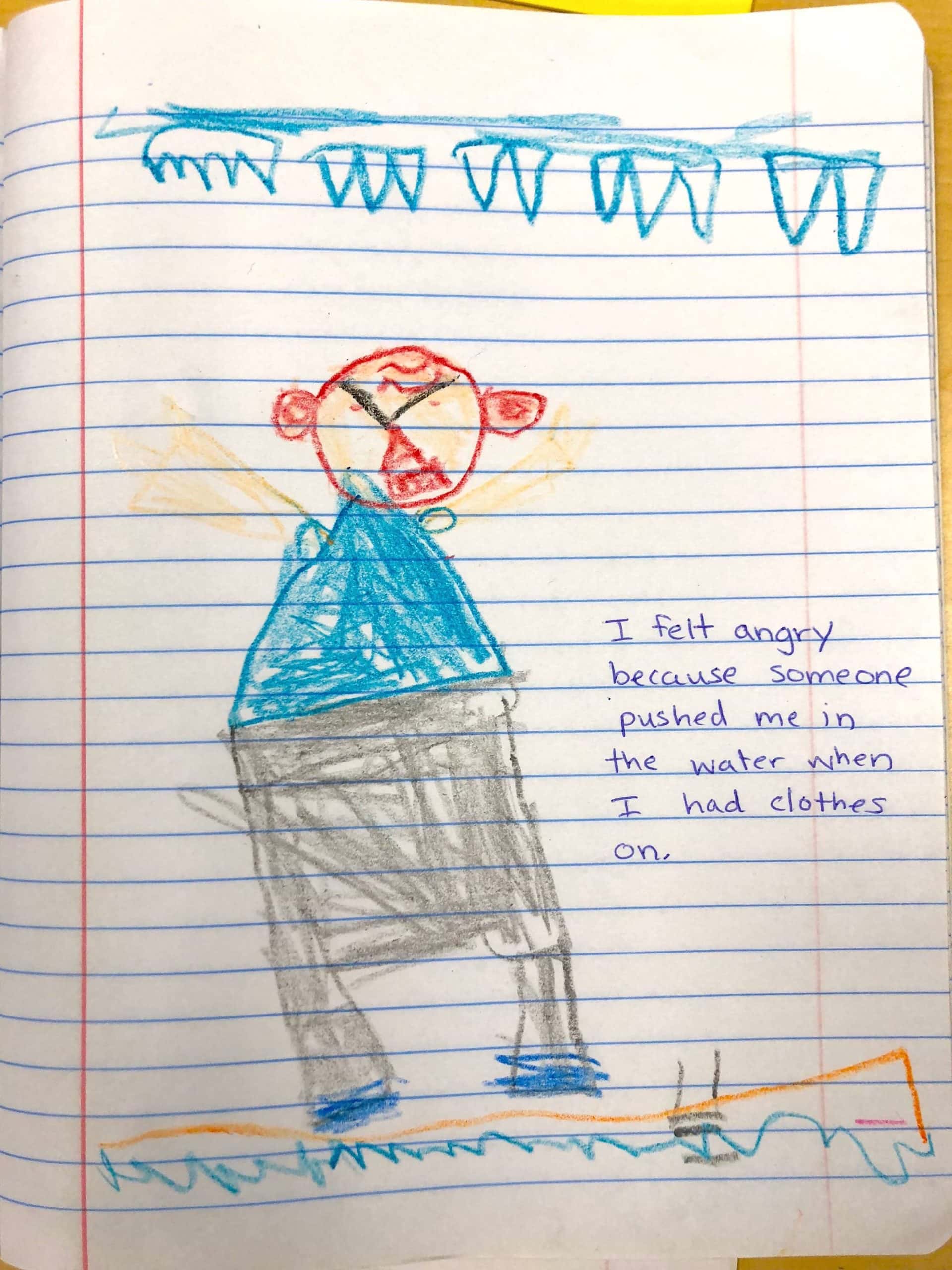
Some students will need more support than others. That’s okay. The goal is progress.
Tracing/Rewriting
Not every student will need this scaffold (or any scaffold list in this post). So, I don’t blanket use this support. It is only provided for students who are ready to write letters/words with the next level of support.
This friend was ready to story tell and had the OT skills to write letters and words. So, after drawing and dictating, the student used the teacher writing to share their ideas! Some students may need to trace and eventually copy from a teacher’s writing of a dictation.
Lines (words) + Dots (sounds)
With this writer, we practiced clapping out and counting the words in each sentence (like we do in Heggerty). Then, I draw the lines and dots. (Lines = words, dots = sounds). This friend knows A LOT of sounds, so realistically the clapping and drawing of lines needs to slowly become his job. (Writing readers: It was a hot day. My cone is really melting.)
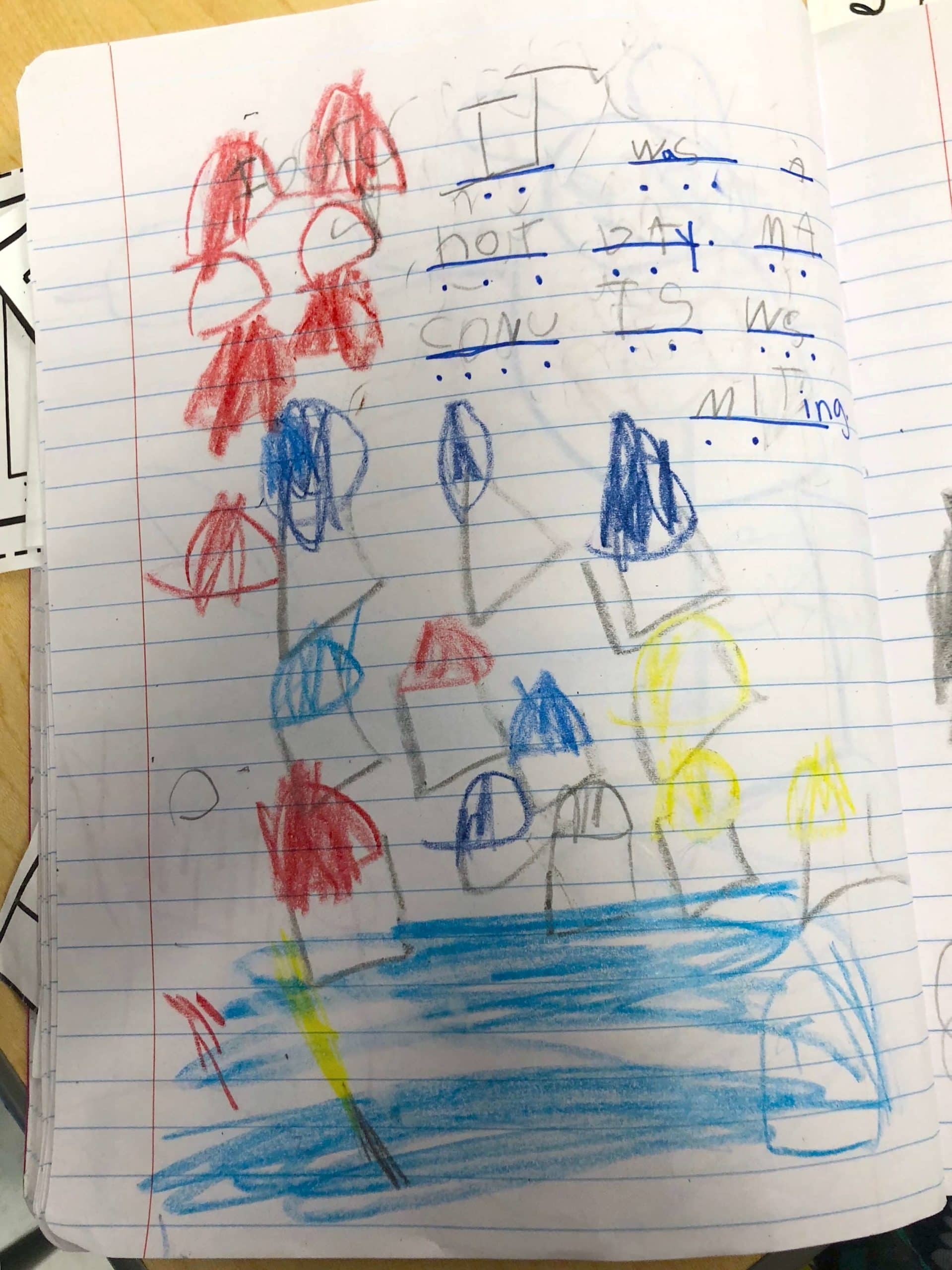
As students begin writing sounds on their own, we typically begin with beginning and ending sounds. Then, throwing in the medial sounds.
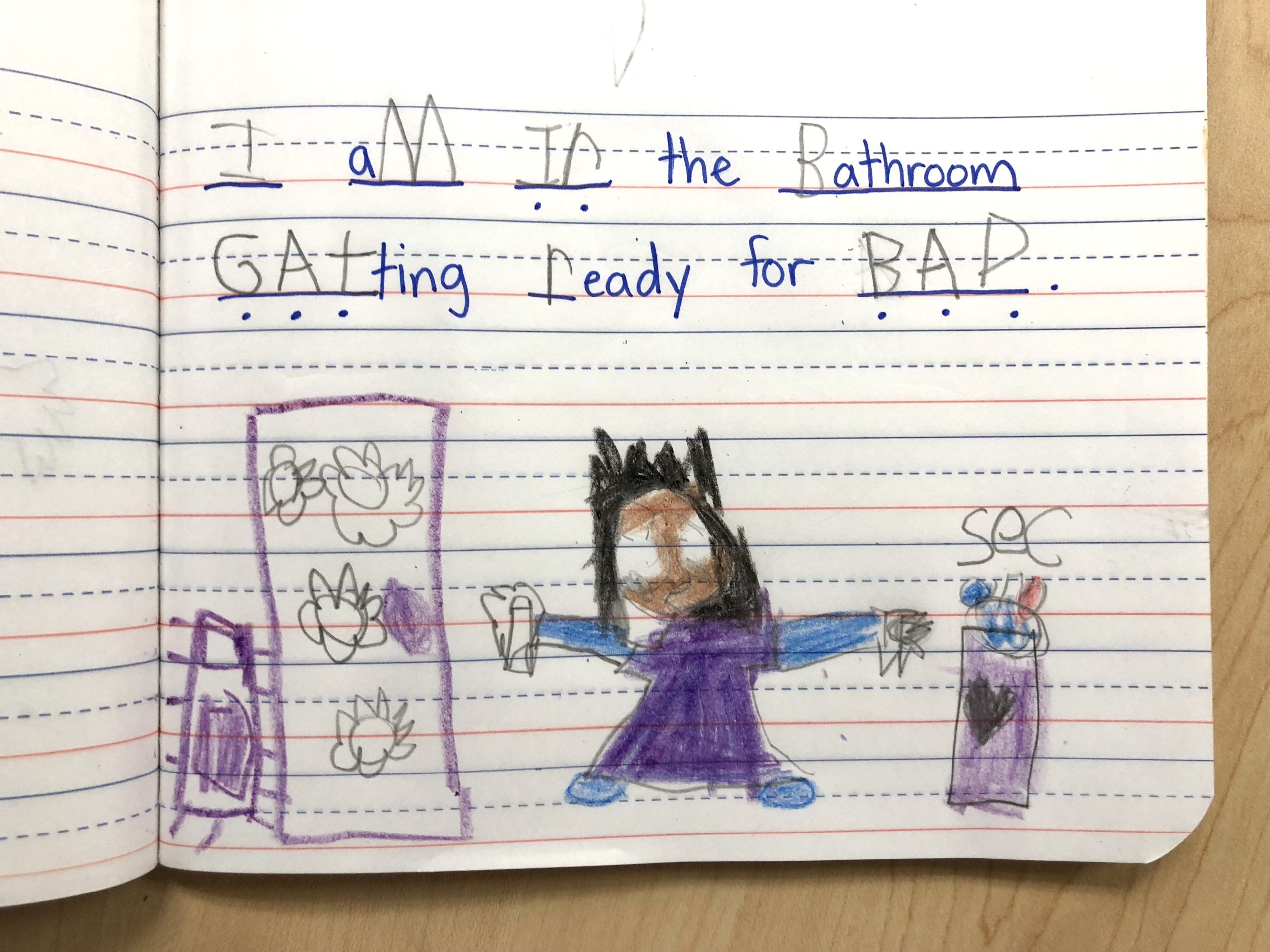
Sometimes we remove scaffolds and then say “Abort Mission!” Sometimes we can’t make it to everyone who needs the support. That’s teaching. For this friend, inventive spelling and random letter combinations are completely normal and appropriate. The next day, when more support was available, the focus was on clapping and drawing lines to indicate words. Then, we worked to identify final and ending sounds.
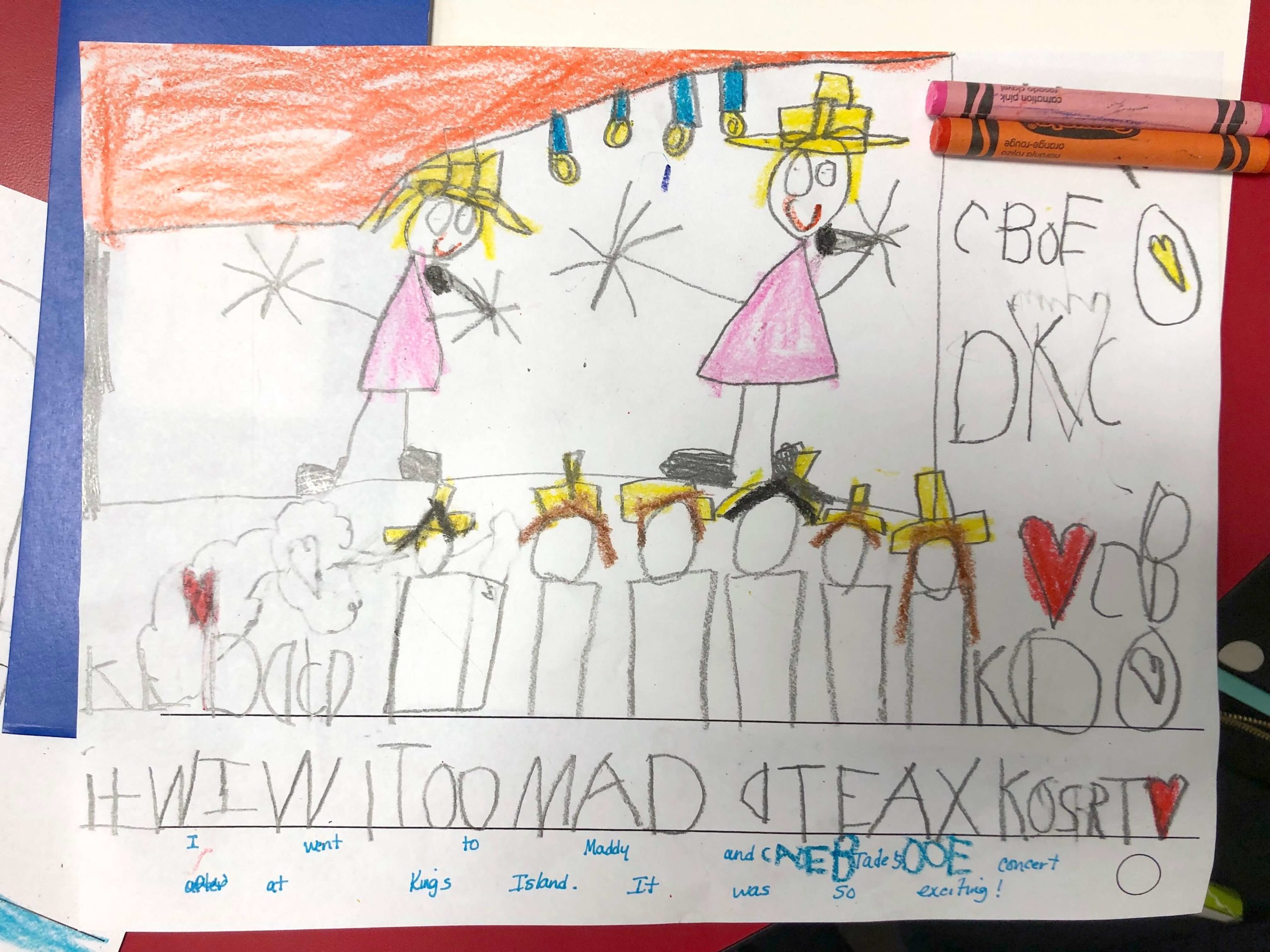
Non-teacher Scaffolds
We can also offer supports that don’t involve direction teacher interaction. Using text-to-speech and/or voice memos are a viable option if students have an IEP that includes a scribe, writing is laborious, or there is an OT barrier.
Graphic organizers and sentence stems/frames can help support students in the language of writing (and academic conversation) while allowing them to focus on ideas and craft. (Below you see a main idea that was provided with students researching to find the details to support the main idea.)
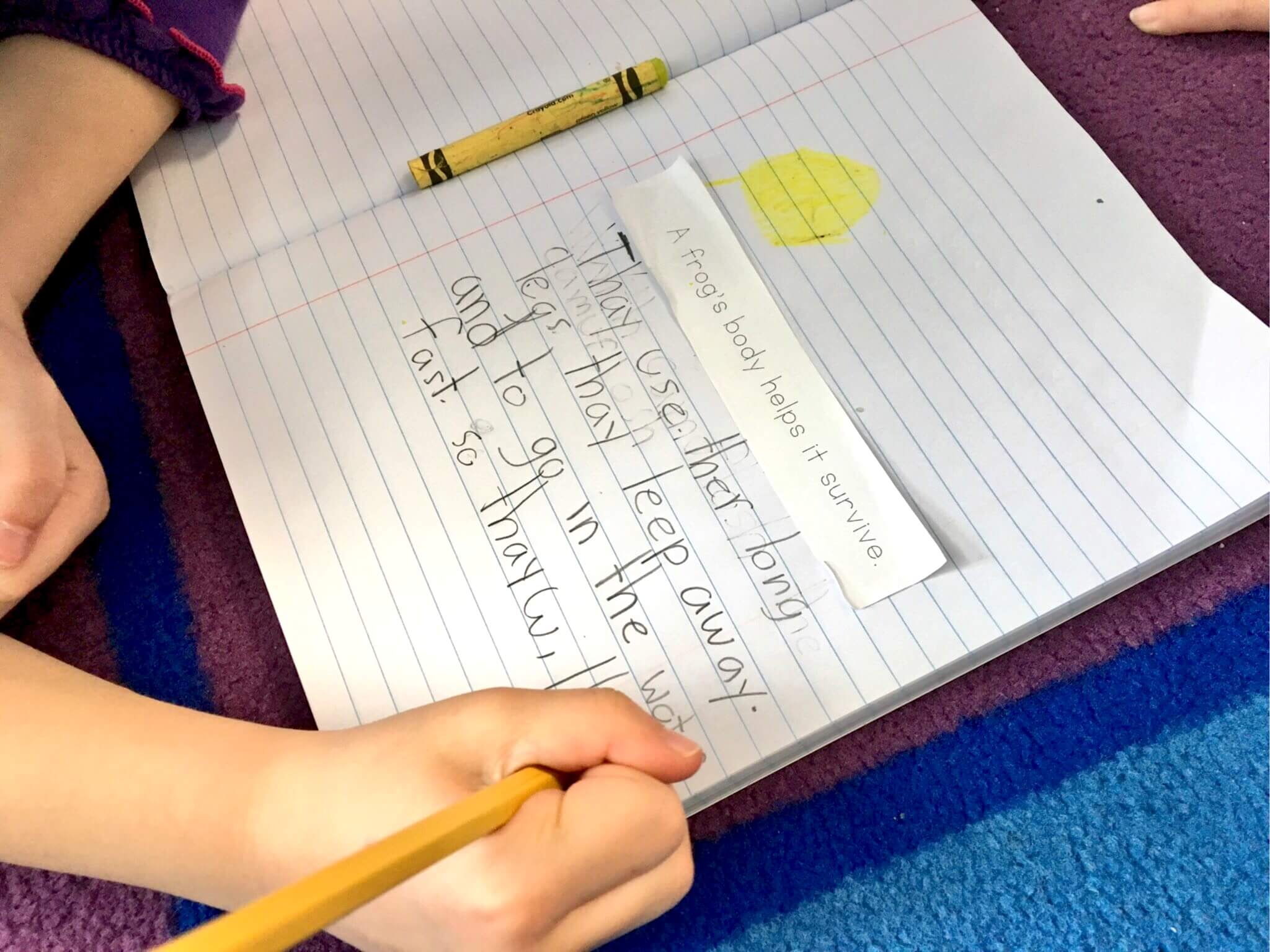
Sound References
Offering references for sounds can be really helpful, too. We explicitly model how to use the charts during mini-lessons and then, revisit them frequently during our mini-lesson and sharing writing time. Using the same sound charts as you do in reading allows students repeated opportunities to have support in using them. Additionally, different charts can be used to support different students, based on needs (alphabet, digraphs, vowel teams, etc). This chart is from Haley O’Connor.
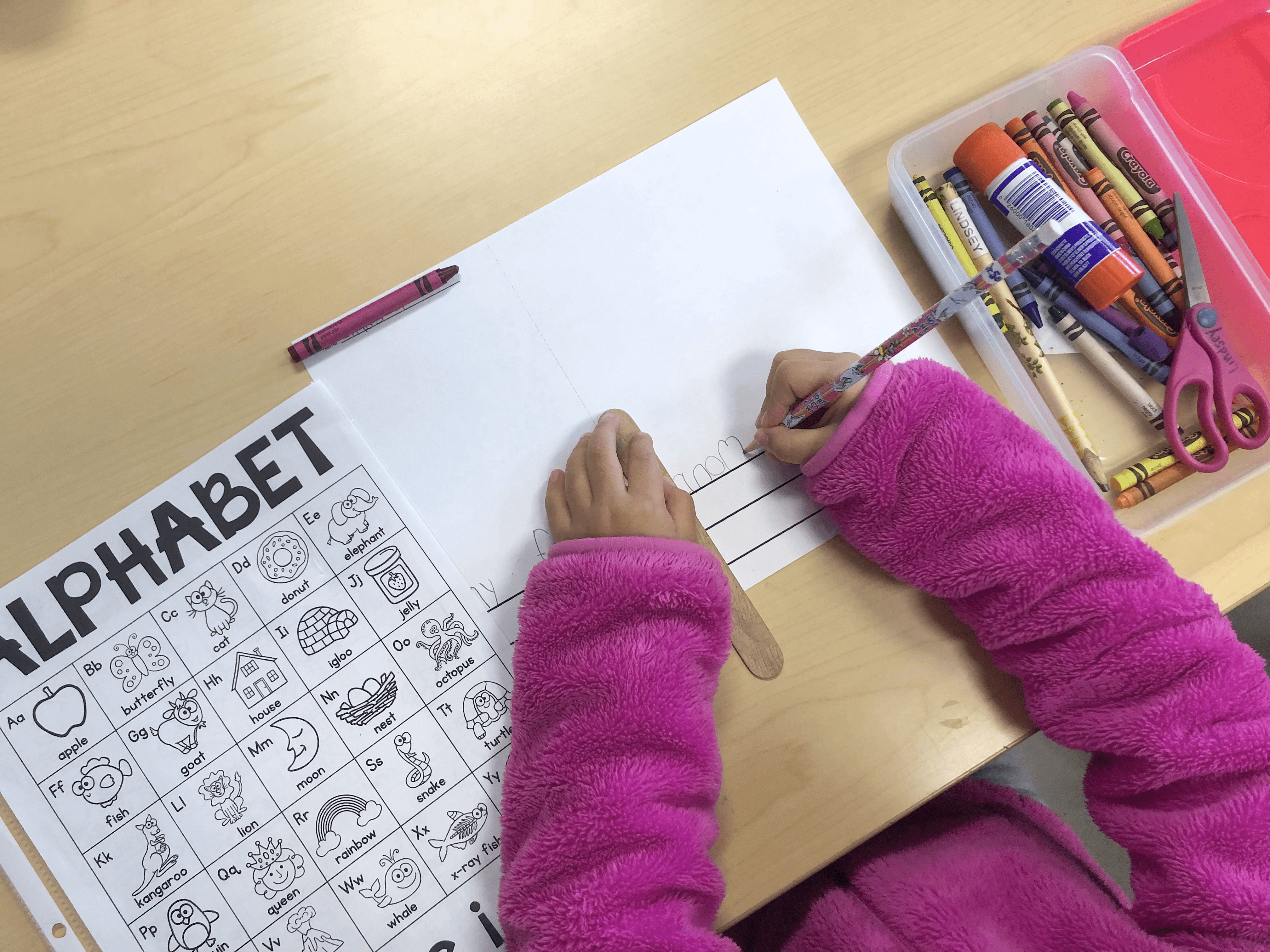
We can also offer word walls that are easily accessible to students: low, easy-to-read print, picture supports, words students routinely spell. I love this bulletin board paper word wall under a SMART board. So simple and easy.
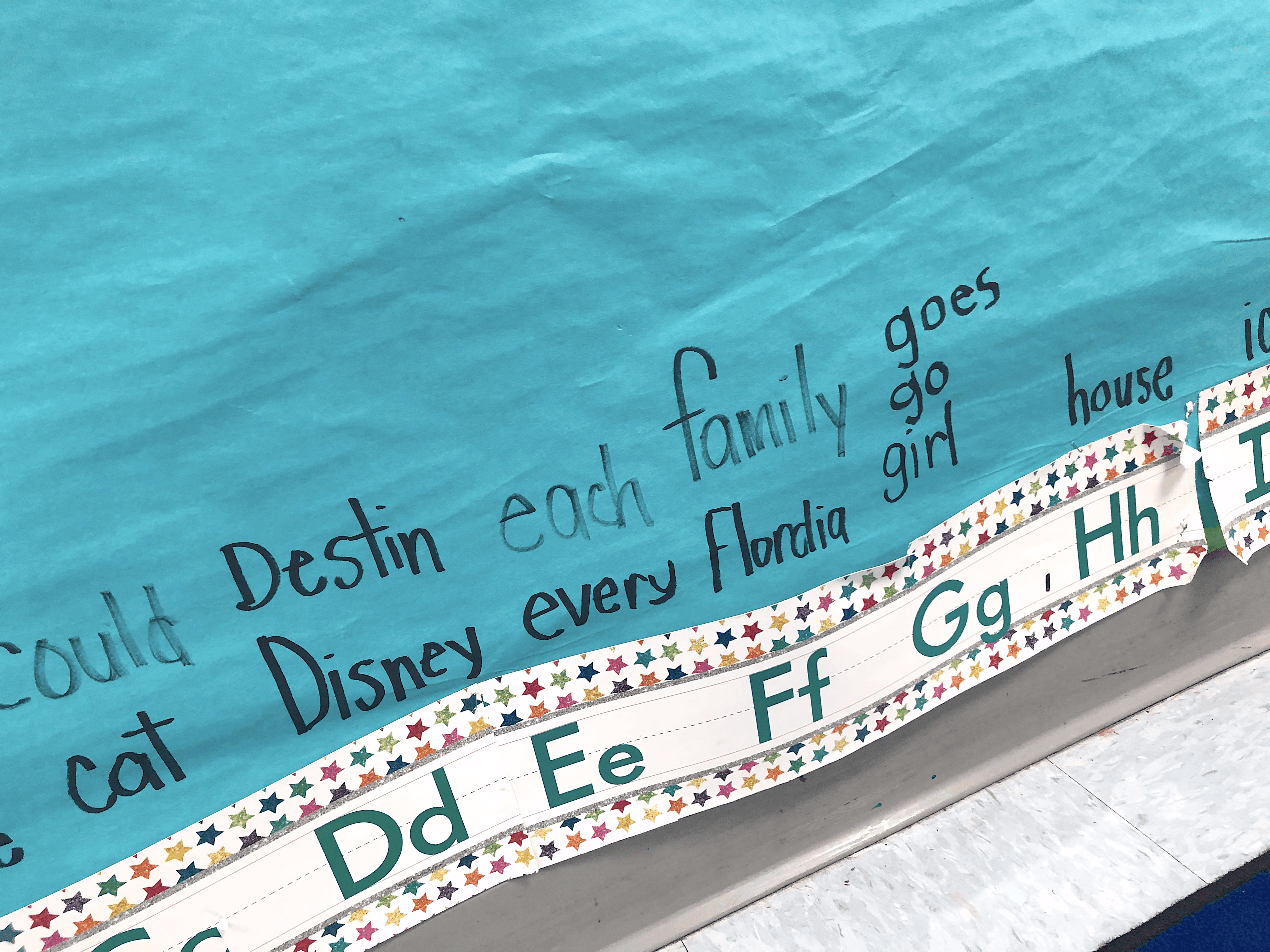
You might even keep student-created words walls (word + picture) specific to themes or topics you’ve studied together. Slip them in a sheet protector and include them in student writing folders.
Writing is the Long Game
Teaching writing is truly the long game. It takes time, intention, support, trial and error, integration of skills…ALLTHETHINGS. Scaffolding kindergarten writers in the just-right ways can help build students’ independence and success.
If there are other supports you use for students, I would love to learn more about that. Leave a comment below sharing your kindergarten writing experience!
FREE Work on Writing Papers

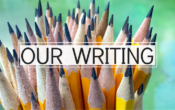


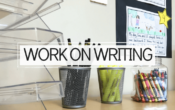
Do you have differentiated graphic organizers for 3rd grade and up?
No I don’t have graphic organizers for my class.
That is to say, a learner may still achieve mastery of this writing standard by making use of all of these different elements. Slowly but surely, we begin to dordle create independence via activities such as drawing lines to signify individual words, recognizing distinct sounds within words (beginning sounds —> ending sounds —> middle sounds), and so on.
It’s something I’ve wanted for a long time. Thank goodness the order finally arrived soccer random.
There is a lot of useful information on this site. You can relax and enjoy your favorite games here: redactle
This is a fantastic article. This is, in my opinion, one of the most well-written pieces ever. Your work is outstanding and inspirational. Thank you once again.
If you want to explore some crazy aesthetic instagram captions then click here to to visit our site and explore best captions for your posts
Your travle words possess an almost therapeutic quality, providing comfort and solace to readers who may be navigating their own challenges.
Cath, I concur that instructing writing is genuinely a long-term endeavor. As a teacher, I view it as more of a slow walk rather than a marathon because not all students are capable of rapidly learning new things 🙂 I also use positive s words to encourage my students..because no one was born a writer! 🙂
Thank you for this wonderful post, great article, keep up the excellent work.
For those with a passion for fashion and a knack for digital marketing, the SHEIN Affiliate Program can be a gateway to unlocking earnings and fashion in one exciting partnership.
The information you share is great, please continue to write about this topic regularly flagle
I have no words to express my gratitude for this post….I am truly impressed by this post…the author of this post was an exceptional individual.Thank you for revealing this to us.We appreciate your willingness to share information with us.
Kindergarten teachers have a hard time
I’m relieved to have found this helpful resource. The preceding piece in particular has taught me a great deal about the world and its workings.
Your sharing of this informative piece on the realm of online betting is much appreciated. Providing Skyinplay, our customers with a safe and reliable platform to enjoy the thrill of online cricket betting is our top priority as a reputable supplier of.
We appreciate you sharing this insightful article on the world of online betting. As a trusted provider of Laserbook247, we are committed to offering our clients a secure and dependable platform for indulging in the excitement of online cricket betting.
amazing
Thanks for the useful information Lotus365 New ID
Great blog. Reading your article was interesting. To me, this is really an interesting website. I bookmarked it and would love to read more from it. Continue your great efforts! flagle game
I’d like to say that I haven’t read anything so interesting in a long time age of war
I earnestly request that you maintain the provision of superior quality content to the community. Play skribbl io game.